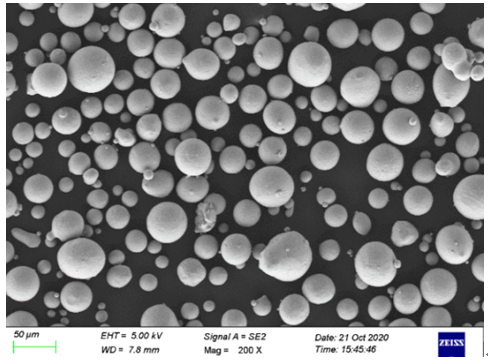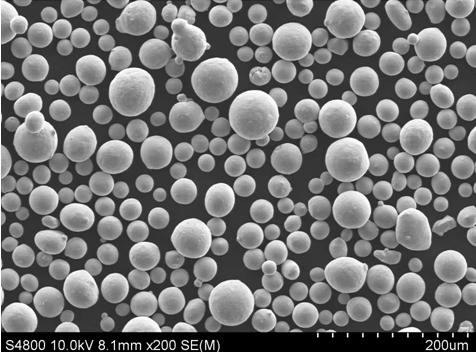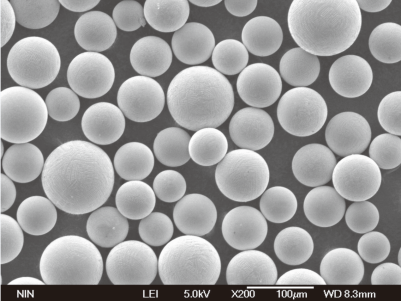Introdução
Pó de ferro de alta pureza é um material crítico usado em vários setores, da metalurgia à eletrônica. Mas o que exatamente o torna tão especial? Como ele difere do pó de ferro normal? Neste guia, mergulharemos no mundo do pó de ferro de alta pureza, explorando sua composição, características, aplicações e muito mais. Seja você um profissional experiente ou um aluno curioso, este artigo foi projetado para responder a todas as suas perguntas sobre pó de ferro de alta pureza.
Visão geral do pó de ferro de alta pureza
O pó de ferro de alta pureza é pó de ferro com um nível de pureza de 99,9% ou superior. Suas propriedades exclusivas o tornam ideal para aplicações
Características Principais do Pó de Ferro de Alta Pureza
- Pureza: Tipicamente 99,9% ou superior
- Tamanho da partícula: Pode variar de alguns micrómetros a várias centenas de micrómetros
- Forma: Esférico ou irregular, dependendo do método de produção
- Propriedades magnéticas: Alta magnetização de saturação
- Condutividade elétrica: Excelente devido ao alto nível de pureza

Composição e Propriedades do Pó de Ferro de Alta Pureza
| Propriedade | Descrição |
|---|---|
| Pureza | 99,9% ou superior |
| Tamanho da partícula | De alguns micrómetros a várias centenas de micrómetros |
| Forma | Esférico ou irregular |
| Saturação Magnética | Alta |
| Condutividade elétrica | Excelente devido a impurezas mínimas |
| Densidade | Varia dependendo do tamanho e forma das partículas |
| Área de superfície | Maior em pós mais finos |
| Conteúdo de oxigênio | Baixa, garantindo oxidação mínima |
Tipos e modelos de Pó de ferro de alta pureza
Existem vários tipos de pó de ferro de alta pureza, cada um adaptado a aplicações específicas. As diferenças entre esses tipos residem no tamanho, forma e métodos de produção das partículas. Abaixo, discutimos alguns dos modelos mais comuns disponíveis no mercado:
1. Pó de Ferro Atomizado
O pó de ferro atomizado é produzido através do processo de atomização, onde o ferro fundido é disperso em gotículas finas que se solidificam em pó. Este tipo geralmente tem uma forma esférica e é usado em aplicações onde a fluidez e a densidade de empacotamento são importantes.
- Pureza: 99,9% ou superior
- Formulários: Metalurgia do pó, materiais magnéticos, moldagem por injeção de metal (MIM)
2. Pó de Ferro Reduzido
O pó de ferro reduzido é produzido pela redução de minério de ferro ou escória de laminação em uma atmosfera de hidrogênio. Geralmente tem uma forma irregular e é usado em aplicações onde a área de superfície é crítica, como em reações químicas ou como catalisador.
- Pureza: 99,5% a 99,9%
- Formulários: Síntese química, indústria farmacêutica, materiais magnéticos
3. Pó de Ferro Eletrolítico
O pó de ferro eletrolítico é produzido através da eletrólise do ferro. Este método resulta em pureza muito alta e uma distribuição de tamanho de partícula controlada. É frequentemente usado em aplicações que exigem alta precisão e pureza.
- Pureza: 99,9% ou superior
- Formulários: Eletrônicos, fabricação de baterias, ímãs de alto desempenho
4. Pó de Ferro Carbonílico
O pó de ferro carbonílico é produzido pela decomposição do pentacarbonilo de ferro. Este método cria partículas esféricas ultrafinas, frequentemente usadas em aplicações que exigem alta magnetização e impurezas mínimas.
- Pureza: 99,9% ou superior
- Formulários: Eletrônicos, indutores, blindagem eletromagnética
5. Pó de Ferro Atomizado por Água
Semelhante ao pó de ferro atomizado, mas usando água como meio de dispersão, o pó de ferro atomizado por água tem formas irregulares e é usado onde é necessário um equilíbrio entre custo e desempenho.
- Pureza: 99,5% a 99,9%
- Formulários: Metalurgia do pó, peças automotivas, moldagem por injeção de metal (MIM)
6. Pó de Ferro Atomizado por Gás
O pó de ferro atomizado por gás, criado usando gases inertes para dispersar o ferro fundido, geralmente tem uma forma esférica mais uniforme e é usado em aplicações de alto desempenho.
- Pureza: 99,9% ou superior
- Formulários: Aeroespacial, impressão 3D, materiais magnéticos
7. Pó de Ferro Ultra-Fino
O pó de ferro ultra-fino é caracterizado por seu tamanho de partícula extremamente pequeno, muitas vezes na faixa de nanômetros. É usado em aplicações avançadas, como revestimentos, tintas e nanotecnologia.
- Pureza: 99,9% ou superior
- Formulários: Revestimentos, nanotecnologia, tintas condutoras
8. Pó de Ferro de Alta Densidade
O pó de ferro de alta densidade é projetado para aplicações que exigem densidade máxima de empacotamento e é tipicamente usado em metalurgia de alto desempenho.
- Pureza: 99,7% a 99,9%
- Formulários: Aeroespacial, automotivo, máquinas pesadas
9. Pó de Ferro Magnético
O pó de ferro magnético é especialmente processado para melhorar suas propriedades magnéticas e é usado em aplicações como indutores, transformadores e blindagem magnética.
- Pureza: 99,9% ou superior
- Formulários: Transformadores, indutores, blindagem magnética
10. Pó de Ferro Formado por Pulverização
O pó de ferro formado por pulverização é criado usando um processo de solidificação rápida, resultando em uma microestrutura única que fornece propriedades mecânicas aprimoradas.
- Pureza: 99,8% a 99,9%
- Formulários: Ferramentas, peças estruturais, ligas de alto desempenho
Aplicações do Pó de Ferro de Alta Pureza
O pó de ferro de alta pureza é utilizado em uma ampla gama de indústrias devido às suas propriedades excepcionais. Suas aplicações abrangem desde a metalurgia tradicional até a eletrônica e nanotecnologia de ponta.
Tabela: Aplicações do Pó de Ferro de Alta Pureza
| Área de aplicação | Descrição |
|---|---|
| Metalurgia do pó | Usado para criar peças de alta resistência e precisão através de sinterização e outros processos. |
| Eletrônicos | Essencial na fabricação de componentes como indutores, capacitores e transformadores. |
| Materiais magnéticos | Usado para produzir ímãs de alto desempenho para várias aplicações, incluindo motores e sensores. |
| Síntese química | Serve como catalisador em reações químicas e é usado na produção de materiais sintéticos. |
| Produtos farmacêuticos | Empregado na fabricação de certas formulações de medicamentos devido à sua alta pureza. |
| Nanotecnologia | Usado em materiais e revestimentos avançados, muitas vezes em nível de nanoescala. |
| Fabricação de Baterias | Usado na produção de baterias de alto desempenho, especialmente nos materiais de cátodo e ânodo. |
| Manufatura Aditiva | Essencial para impressão 3D e outras técnicas de fabricação aditiva, fornecendo pós finos e uniformes. |
| Blindagem eletromagnética | Utilizado na criação de materiais que protegem dispositivos eletrônicos contra interferência eletromagnética. |
| Ligas de alto desempenho | Adicionado a ligas para melhorar suas propriedades mecânicas, especialmente em aplicações aeroespaciais e automotivas. |






Especificações, tamanhos, classes e padrões
Ao selecionar o pó de ferro de alta pureza, é crucial entender as especificações, tamanhos, graus e padrões que se aplicam. Esses parâmetros podem variar dependendo da aplicação pretendida, e conhecer a escolha certa pode impactar significativamente o desempenho.
Tabela: Especificações do Pó de Ferro de Alta Pureza
| Especificação | Descrição |
|---|---|
| Níveis de pureza | 99,5% a 99,9% ou superior |
| Faixa de tamanho de partícula | De nanômetros (nm) a várias centenas de micrómetros (µm) |
| Padrões de notas | ASTM, ISO, JIS, dependendo da indústria |
| Formas Disponíveis | Esférico, irregular, flocos |
| Método de produção | Atomização, redução, eletrolítico, carbonílico |
| Faixa de Densidade | Depende do tamanho e forma das partículas; tipicamente 2,5-7,8 g/cm³ |
| Propriedades magnéticas | Alta magnetização de saturação, baixa coercividade |
| Condutividade | Alta condutividade elétrica devido a impurezas mínimas |
Tabela: Graus de Pó de Ferro de Alta Pureza
| Grau | Nível de pureza | Formulários |
|---|---|---|
| Grau A | 99,9% ou superior | Eletrônicos, dispositivos médicos, ímãs de alto desempenho |
| Grau B | 99,7% a 99,9% | Metalurgia do pó, síntese química |
| Grau C | 99,5% a 99,7% | Fabricação aditiva, componentes automotivos |
| Grau D | 99,0% a 99,5% | Metalurgia geral, ferramentas, peças estruturais |
Fornecedores e Detalhes de Preços de Pó de ferro de alta pureza
A disponibilidade e o custo do pó de ferro de alta pureza podem variar significativamente dependendo do fornecedor, região e requisitos específicos do produto. Abaixo está um guia para alguns dos principais
fornecedores e seus detalhes de preços.
Tabela: Fornecedores e Preços do Pó de Ferro de Alta Pureza
| Fornecedor | Localização | Linha de produtos | Faixa de preço (por kg) |
|---|---|---|---|
| Höganäs AB | Suécia | Pós atomizados, reduzidos, eletrolíticos | $50 – $200 |
| JFE Steel Corporation | Japão | Pó de ferro de alta pureza para eletrônicos e metalurgia | $80 – $250 |
| Pós metálicos da Rio Tinto | Canadá | Pós atomizados por gás, atomizados por água | $60 – $180 |
| BASF | Alemanha | Pó de ferro carbonílico, pós ultrafinos | $100 – $300 |
| Metalurgia do pó da GKN | EUA | Pós de ferro magnéticos de alta densidade | $70 – $220 |
| Mitsui Mining & Smelting | Japão | Pós formados por pulverização, de pureza ultra-alta | $90 – $280 |
| Grupo CNPC Powder | China | Pós reduzidos, atomizados, eletrolíticos | $40 – $150 |
| Kobe Steel | Japão | Graus especiais para aplicações avançadas | $110 – $320 |
| Tecnologia de Materiais Sandvik | Suécia | Pós de ferro de alto desempenho para aeroespacial e automotivo | $120 – $350 |
| Elementos americanos | EUA | Nanopartículas, pós ultrafinos | $200 – $500 |
Vantagens e Limitações do Pó de Ferro de Alta Pureza
Como qualquer material, o pó de ferro de alta pureza vem com seu próprio conjunto de vantagens e limitações. Compreender isso pode ajudar na seleção do tipo certo para sua aplicação.
Tabela: Vantagens e Limitações do Pó de Ferro de Alta Pureza
| Vantagens | Limitações |
|---|---|
| Alta resistência | Ideal para aplicações que exigem propriedades mecânicas robustas |
| Excelentes Propriedades Magnéticas | Perfeito para materiais magnéticos e blindagem eletromagnética |
| Alta pureza | Reduz impurezas, aprimorando a condutividade e o desempenho |
| Aplicações versáteis | Pode ser usado em uma ampla gama de indústrias, de eletrônicos a produtos farmacêuticos |
| Personalização | Disponível em vários graus, tamanhos e formas para atender às necessidades específicas |
| Custo | Níveis de pureza mais altos podem ser caros |
| Complexidade de Produção | Requer métodos de produção avançados, o que pode limitar a disponibilidade |
| Fornecedores Limitados | Não tão amplamente disponível quanto os pós de ferro de menor grau |
| Sensibilidade à Oxidação | O ferro de alta pureza pode ser mais propenso à oxidação, exigindo armazenamento cuidadoso |
Comparando o Pó de Ferro de Alta Pureza com Outros Pós de Metal
Como o pó de ferro de alta pureza se compara a outros tipos de pós de metal? Vamos compará-lo a algumas alternativas comumente usadas:
Tabela: Comparação do Pó de Ferro de Alta Pureza com Outros Pós de Metal
| Pó metálico | Nível de pureza | Formulários | Vantagens | Limitações |
|---|---|---|---|---|
| Pó de ferro de alta pureza | 99,5% a 99,9% ou superior | Eletrônicos, metalurgia, síntese química | Alta resistência, excelentes propriedades magnéticas, alta condutividade | Custo mais alto, sensível à oxidação |
| Pó de alumínio | 99,0% a 99,8% | Ligas leves, pirotecnia, revestimentos | Leve, boa condutividade, resistência à corrosão | Menor resistência, menos propriedades magnéticas |
| PÓ DE COBRE | 99,9% ou superior | Tintas condutoras, eletrônicos, brasagem | Excelente condutividade, boas propriedades térmicas | Custo mais alto, propenso à oxidação |
| Níquel em pó | 99,0% a 99,9% | Ligas de alto desempenho, baterias | Resistência à corrosão, boas propriedades magnéticas | Caro, disponibilidade limitada |
| Pó de aço inoxidável | 95% a 99,5% | Ferramentas, impressão 3D, peças estruturais | Resistência à corrosão, alta resistência | Mais pesado, menos condutivo que metais puros |
| Pó de titânio | 99,5% a 99,9% | Aeroespacial, implantes médicos, fabricação aditiva | Alta relação resistência/peso, biocompatível | Muito caro, difícil de processar |
| Cobalto em pó | 99,0% a 99,9% | Superligas, baterias, materiais magnéticos | Resistência a altas temperaturas, boas propriedades magnéticas | Caro, disponibilidade limitada |
| Pó de prata | 99,9% ou superior | Eletrônicos, dispositivos médicos, tintas condutoras | Melhor condutividade elétrica, propriedades antimicrobianas | Extremamente caro, propenso a manchas |
| Zinco em pó | 99,0% a 99,5% | Galvanização, baterias, produtos farmacêuticos | Boa resistência à corrosão, barato | Menor resistência, menor condutividade |
| Magnésio em pó | 99,0% a 99,5% | Ligas leves, pirotecnia, baterias | Muito leve, boa usinabilidade | Altamente reativo, inflamável |
Como Escolher o Certo Pó de ferro de alta pureza para Sua Aplicação
Escolher o pó de ferro de alta pureza certo para sua aplicação pode ser uma decisão complexa. Aqui estão alguns fatores-chave a serem considerados:
1. Nível de Pureza
O nível de pureza necessário depende da sua aplicação. Por exemplo, em eletrônicos e produtos farmacêuticos, onde as impurezas podem afetar significativamente o desempenho, você precisará de pó de ferro com 99,9% ou mais de pureza. Por outro lado, para metalurgia geral, um nível de pureza ligeiramente inferior pode ser suficiente.
2. Tamanho e Forma das Partículas
O tamanho e a forma das partículas podem influenciar a fluidez, a densidade de empacotamento e a área de superfície do pó. Pós esféricos são geralmente preferidos em aplicações que exigem boa fluidez, como moldagem por injeção de metal, enquanto partículas irregulares podem ser melhores para síntese química devido à sua maior área de superfície.
3. Propriedades magnéticas
Se sua aplicação envolve materiais magnéticos, concentre-se em pós de ferro com alta saturação magnética e baixa coercividade. Pós de ferro magnéticos e pós de ferro carbonílico são frequentemente as melhores opções para tais aplicações.
4. Método de Produção
O método de produção pode afetar tanto o custo quanto as propriedades do pó de ferro. Por exemplo, pós atomizados são geralmente mais caros, mas oferecem melhor fluidez e densidade de empacotamento, enquanto pós reduzidos podem ser mais econômicos, mas menos uniformes.
5. Custo e Disponibilidade
Finalmente, considere seu orçamento e a disponibilidade do grau específico de pó de ferro de alta pureza. Embora pós especiais de alta pureza ofereçam desempenho superior, eles também têm um custo mais alto e podem ter fornecedores limitados.

perguntas frequentes
O que é pó de ferro de alta pureza?
O pó de ferro de alta pureza é um pó de ferro fino com um nível de pureza de 99,9% ou superior. É usado em várias aplicações que exigem propriedades específicas, como alta resistência, excelente condutividade ou características magnéticas.
Como o pó de ferro de alta pureza é feito?
Pó de ferro de alta pureza pode ser produzido por diversos métodos, incluindo atomização, redução, eletrólise e decomposição do pentacarbonilo de ferro. A escolha do método depende do tamanho, forma e nível de pureza desejados das partículas.
Quais são as aplicações comuns do pó de ferro de alta pureza?
O pó de ferro de alta pureza é usado em indústrias como eletrônica, metalurgia do pó, materiais magnéticos, síntese química, produtos farmacêuticos e manufatura aditiva. Suas aplicações variam de ímãs de alto desempenho a materiais avançados para baterias.
Qual é a diferença entre o pó de ferro atomizado e o pó de ferro reduzido?
O pó de ferro atomizado é produzido pela dispersão de ferro fundido em gotículas finas, resultando em partículas esféricas, enquanto o pó de ferro reduzido é feito pela redução do minério de ferro em uma atmosfera de hidrogênio, resultando em partículas com formato irregular. Os pós atomizados são preferidos por sua fluidez, enquanto os pós reduzidos são usados por sua maior área de superfície.
Como escolho o pó de ferro de alta pureza certo para minhas necessidades?
Considere fatores como o nível de pureza exigido, tamanho e forma das partículas, propriedades magnéticas, método de produção e custo. Sua aplicação específica determinará a melhor escolha de pó de ferro de alta pureza.
Onde posso comprar pó de ferro de alta pureza?
O pó de ferro de alta pureza está disponível em vários fornecedores em todo o mundo, incluindo Höganäs AB, JFE Steel Corporation, Rio Tinto Metal Powders, BASF e GKN Powder Metallurgy. Os preços variam dependendo da qualidade, nível de pureza e fornecedor.
Quais são as vantagens de usar pó de ferro de alta pureza?
O pó de ferro de alta pureza oferece vantagens como alta resistência, excelentes propriedades magnéticas, alta condutividade e versatilidade em aplicações. No entanto, também apresenta limitações, como custo mais alto e sensibilidade à oxidação.
O pó de ferro de alta pureza pode ser usado em impressão 3D?
Sim, o pó de ferro de alta pureza é usado na manufatura aditiva, incluindo impressão 3D, onde seu tamanho fino de partícula e propriedades consistentes são essenciais para produzir peças de alta qualidade.
Qual é a faixa de preço para pó de ferro de alta pureza?
O preço do pó de ferro de alta pureza pode variar de US$ 40 a US$ 500 por quilograma, dependendo do nível de pureza, tamanho da partícula, método de produção e fornecedor.
Quais são as propriedades magnéticas do pó de ferro de alta pureza?
O pó de ferro de alta pureza normalmente exibe alta magnetização de saturação e baixa coercividade, tornando-o adequado para uso em materiais magnéticos e blindagem eletromagnética.

